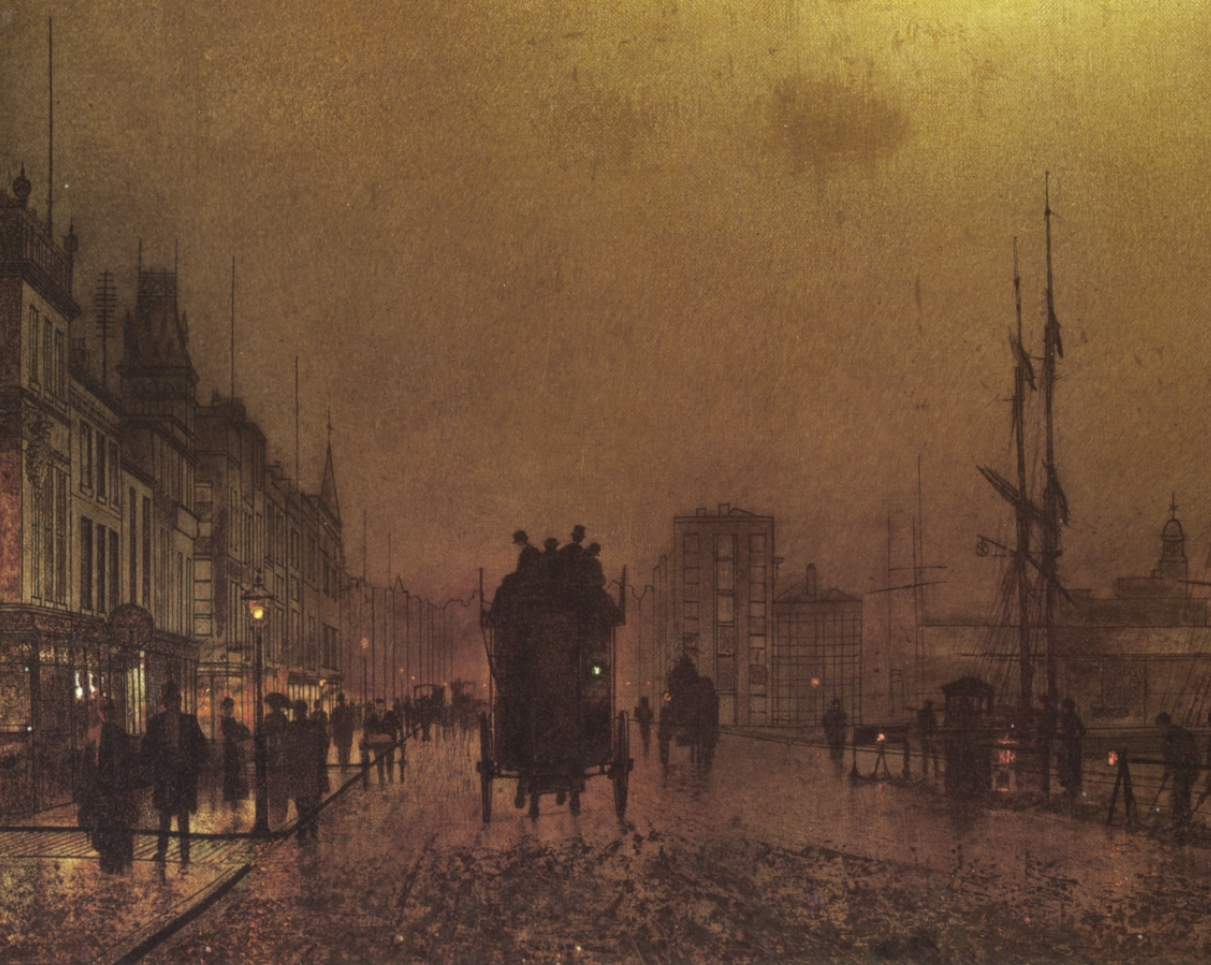Grimshaw skies
DOI: 10.1063/PT.3.4258
In a recent issue of the British glossy magazine Country Life, I spotted an ad for the sale of a landscape by Victorian artist John Atkinson Grimshaw. Titled Autumn Glow, the painting evinced one of the most distinct features of Grimshaw’s work: an evening or night sky of unusual brightness.
Several of Grimshaw’s most characteristic paintings depict lamp-lit streets in Glasgow, Liverpool, and other cities of commerce and industry. Even though Grimshaw was a detailed and realistic artist, his choice to paint at dusk cast an oddly warm, positive light on the same urban worlds that Charles Dickens portrayed as grim and impoverished.

John Atkinson Grimshaw (1836–93) painted this dockside scene in Glasgow, Scotland, around 1889.
BONHAMS

I used to think of Grimshaw whenever I looked up at the night sky on muggy summer nights in Washington, DC, where I’ve lived since 1990. As in one of his paintings, the leaves and branches of trees overhead would appear black against a luminous sky whose pale apricot color arose from the light of sodium streetlamps scattered by aerosols.
There are fewer Grimshaw nights in Washington now. Despite rising temperatures, the air quality in the DC region has improved, especially during summer. It’s still hot and humid, but it’s less sickly. In 1997 the region had 18 code-red days. Last year it had one.
I learned of one of the causes of that welcome trend from a poster paper presented at the 2017 annual meeting of the American Meteorological Society. Graduate student Sandra Roberts of the University of Maryland explained to me that more stringent emissions standards had reduced the amount of ozone-creating nitrogen oxides (NOx) in the atmosphere.
The quality of air in London, sadly, has not improved in the past few decades, despite the passage of the Clean Air Acts of 1956, 1968, and 1993. A friend of mine moved from Boston to the British capital three years ago. Within weeks of arrival, he began coughing. A year later he was hospitalized twice and diagnosed with adult-onset refractory eosinophilic asthma. Why is London’s air so bad? Energy has been heavily taxed in the UK and other European countries for decades. The good upshot is an energy-efficient economy. According to the World Bank, the US produces 7 units of GDP per unit of energy usage, whereas the UK produces 12. The bad upshot is that high fuel prices and tax incentives have prompted Europeans to buy diesel cars, whose engines are more thermodynamically efficient than their gasoline counterparts. That advantage prevails even though gasoline engines burn almost all of their fuel, whereas diesels do not. The unburnt fraction of diesel fuel is a prime source of pollution—at least in older cars. The European Union’s latest emission standards, Euro 6 of 2015, require diesel cars to emit no more than 80 mg/km of NOx. By contrast, Euro 1 of 1992 set no limit; Euro 3 of 2000 set a limit of 500 mg/km.
Earlier this year London mayor Sadiq Khan imposed an Ultra Low Emissions Zone (ULEZ) on Westminster and the City. Diesel cars that don’t meet Euro 6 and gasoline cars that don’t meet Euro 4 have to pay a daily fee of £12.50 ($15.67) to enter central London or face a fine of £160. Khan has proposed to extend ULEZ to almost all of Greater London by 2021. Londoners who drive older cars are outraged. Some of them bought diesel cars expressly because they are more frugal than gasoline cars. The UK government even incentivized drivers to switch to diesel by lowering the tax on the fuel relative to gasoline.
The lesson from DC is that emissions standards work. The lesson from London is more subtle. Promoting diesel cars lowered carbon dioxide emissions at the expense of increased pollution, which eventually led to emissions standards that are likely more stringent than if the switch to diesel had not occurred.

